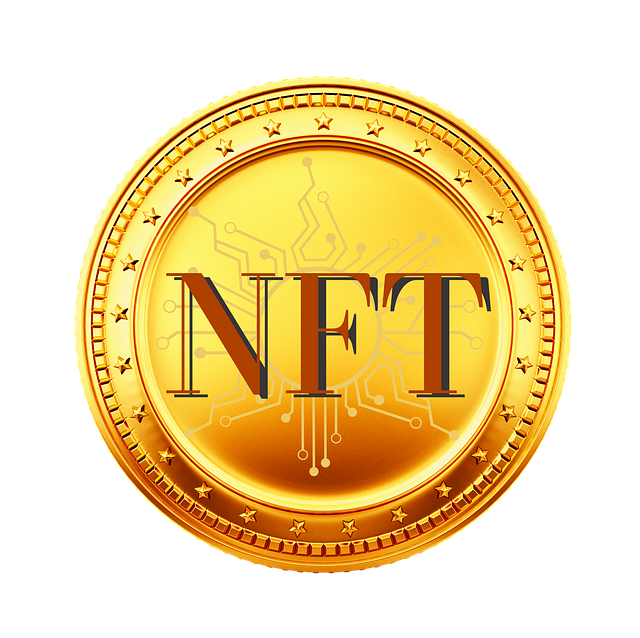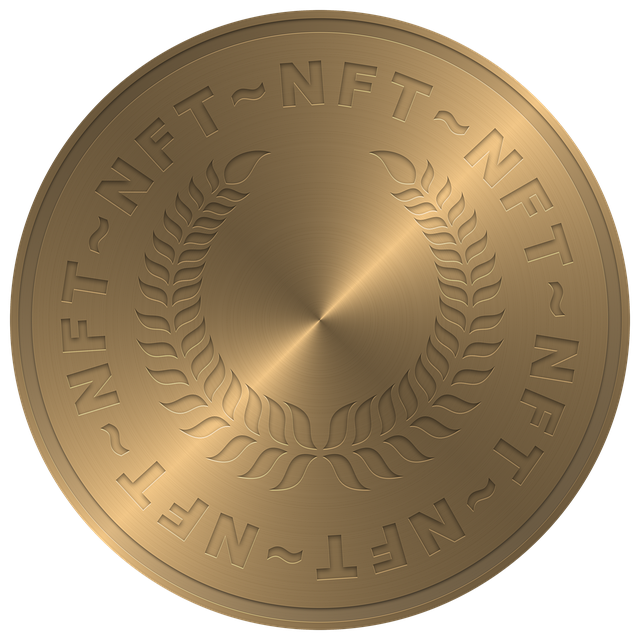How Does Crypto Trading Platform Work: A Practical Guide
Author: Jameson Richman Expert
Published On: 2025-11-13
Prepared by Jameson Richman and our team of experts with over a decade of experience in cryptocurrency and digital asset analysis. Learn more about us.
How does crypto trading platform work is a question new and experienced investors often ask before buying, selling, or building trading strategies. This comprehensive guide explains the core components, technical architecture, order flows, security measures, regulatory considerations, and practical steps to start trading safely. You’ll also find actionable tips, real-world examples, recommended exchanges, and curated resources to deepen your understanding.

What is a crypto trading platform?
A crypto trading platform (also called a crypto exchange) is a digital marketplace where users can buy, sell, or trade cryptocurrencies like Bitcoin, Ethereum, and thousands of altcoins. Exchanges offer user interfaces, matching engines, custody solutions, price charts, and often advanced tools such as margin trading, derivatives, staking, and APIs for algorithmic trading. For background on cryptocurrencies and blockchain technology, see the Wikipedia overview on cryptocurrency and blockchain.
Core components — how a crypto trading platform works, step by step
At a high level, a crypto trading platform functions similarly to traditional exchanges but integrates blockchain interactions. Here are the main components and the typical order flow.
1. User interface (UI) and account management
- Registration and KYC: Users create accounts and often complete Know Your Customer (KYC) and Anti-Money Laundering (AML) checks to comply with regulations.
- Wallet management: Platforms provide hot wallets (online, for immediate trading) and cold wallets (offline, for long-term storage).
- Dashboards and trading terminals: Charts, order entry forms, balances and transaction history.
2. Matching engine and order book
The matching engine is the platform’s core: it pairs buy orders (bids) and sell orders (asks) using the order book. Common order types include:
- Market orders: Fill immediately at the best available price.
- Limit orders: Execute only at a specified price or better.
- Stop / stop-limit orders: Trigger conditional execution based on price levels.
Understanding the order book helps traders read liquidity and price pressure. For trading concepts, Investopedia provides useful definitions such as order book and market microstructure.
3. Liquidity providers and order matching
Liquidity is provided by market makers, institutional traders, and retail participants. Exchanges may also route orders to external liquidity pools or OTC desks to minimize slippage. A high-performance matching engine must be low-latency, deterministic, and capable of handling bursts of orders during volatility.
4. Custody, wallets, and blockchain settlement
Unlike centralized fiat markets, crypto trading involves on-chain settlement when funds are deposited or withdrawn. Platforms manage two custody layers:
- Hot wallets: Connected to the internet for trading and instant withdrawals — convenient but higher risk.
- Cold wallets: Offline storage for bulk reserves — safer against hacks.
Many exchanges use multi-signature wallets and Hardware Security Modules (HSMs) to secure private keys.
5. Clearing, settlement, and accounting
Internal ledgers record user balances and trade history. Only withdrawals and deposits trigger blockchain transactions. Exchanges reconcile ledgers with on-chain balances, apply fees, and generate tax reports for users.
6. APIs and algorithmic trading
Professional traders use REST and WebSocket APIs to place and monitor orders, subscribe to real-time market data, and run automated strategies. API rate limits, order throttling, and latency are crucial considerations for bots.
Types of crypto trading platforms
- Centralized exchanges (CEX): Operate custodial wallets and matching engines (e.g., Binance, Bybit). They are fast and user-friendly but require trust in the operator.
- Decentralized exchanges (DEX): Use smart contracts to enable peer-to-peer swaps (e.g., Uniswap). Users retain custody of funds, but interaction can be slower and requires gas fees.
- Hybrid exchanges: Combine elements of CEX and DEX to offer custody with on-chain settlement.

Key features investors should understand
Trading pairs and markets
Crypto platforms list trading pairs (e.g., BTC/USDT, ETH/BTC). Stablecoin pairs like USDT or USDC are popular for avoiding fiat rails.
Fees and slippage
Fees usually include maker/taker trading fees, deposit/withdrawal fees, and sometimes network fees. Slippage occurs when order size impacts market price. Compare fee schedules and use limit orders to reduce slippage.
Leverage, margin, and derivatives
Many platforms offer margin trading and derivatives (futures, options). While leverage multiplies gains, it also amplifies losses and the platform’s liquidation mechanisms can close positions automatically.
Staking, lending, and yield products
Some exchanges offer staking (locking coins to secure networks), lending, or savings products that yield interest. These features introduce counterparty risk since assets may be used by the platform.
Security controls
- Two-factor authentication (2FA)
- Cold storage and multi-signature policies
- Withdrawal whitelists and IP/device management
- Periodic security audits and bug bounties
Technical architecture — what runs under the hood
Understanding backend architecture helps explain performance and reliability differences between platforms. Typical components include:
- Matching engine: C++/Rust/Go services for low-latency order matching.
- Microservices: Independent services for user accounts, wallets, market data, and risk controls.
- Databases: High-throughput transactional databases for order and ledger persistence (e.g., PostgreSQL, Redis for caching).
- Blockchain nodes: Full nodes or third-party providers to broadcast transactions and check on-chain balances.
- Security modules: HSMs and multi-signature schemes for private key management.
- Monitoring and incident response: Real-time telemetry, rate-limiters, and automated safeguards for market stability.
Regulation and legal considerations
Crypto exchanges operate under varying regulatory regimes. Some regions require licensing, capital reserves, and regular audits. Regulators such as the U.S. Securities and Exchange Commission (SEC) and the UK’s Financial Conduct Authority (FCA) publish guidance for crypto businesses and consumers. See the FCA’s consumer page on cryptoassets and the SEC’s information for investors. Compliance affects KYC, AML, custody standards, and the ability to list certain tokens.

How to evaluate and choose a crypto trading platform
When deciding where to trade, consider these criteria:
- Security track record: History of hacks, audits, and insurance policies.
- Liquidity and order book depth: Lower spreads and less slippage on high-liquidity platforms.
- Fees: Trading fees, withdrawal fees, and staking or lending APRs.
- Supported assets and trading pairs: Does the platform list the coins you want to trade?
- Regulatory compliance: Licensed and transparent operations provide additional consumer protections.
- User experience and customer support: Quality of mobile/web apps and response times for issues.
- Advanced features: Margin, futures, options, API access, and staking.
Recommended exchanges (examples and referral links)
Below are common exchange choices that balance liquidity, features, and global reach. Use these links to register if you want to start trading (affiliate/referral links included):
- Binance — wide selection, deep liquidity
- MEXC — crypto variety and token listings
- Bitget — derivatives and copy trading
- Bybit — futures-focused platform with low latency
Practical walkthrough: From opening an account to executing your first trade
Here’s a concise step-by-step example using a typical centralized exchange.
- Create an account: Sign up with email and password, then complete KYC verification by uploading ID and proof of address.
- Secure your account: Enable 2FA (Google Authenticator), set up withdrawal whitelist and use a strong password manager.
- Deposit funds: Deposit fiat (if supported) or transfer crypto from an external wallet. Note network fees and minimums.
- Understand the trading interface: Open the BTC/USDT order book, check price charts, and review fee tiers.
- Place an order: Use a limit order to buy BTC at a target price to avoid slippage, or a market order for immediate execution.
- Monitor and manage risk: Set stop-loss levels and take-profit targets. For leveraged trades, know your liquidation price.
- Withdraw or hold: For long-term holdings, withdraw to a hardware wallet cold storage; for active trading, leave funds in exchange hot wallets but keep exposure small relative to your risk tolerance.
Security best practices for users
- Use hardware wallets for long-term crypto holdings (e.g., Ledger, Trezor).
- Enable and test 2FA and withdrawal whitelisting.
- Keep only the capital you need for trading on exchanges; store the rest in cold storage.
- Beware of phishing: always verify URLs and use bookmarks for logins.
- Use unique, complex passwords and a reputable password manager.
- Review and limit API key permissions (read-only for analytics, trading keys for bots).

Common trading strategies and examples
Crypto traders use many of the same strategies seen in traditional markets. Below are a few examples with practical notes.
1. HODLing (long-term investing)
Buy and hold coins with strong fundamentals. This is simple but requires conviction and security for custody. Example: purchasing Bitcoin and withdrawing to cold storage to minimize exchange counterparty risk. For long-term market context and price forecasts, see this Bitcoin 2030 forecast and investment guide.
Bitcoin price in 2030 — forecasts and scenarios
2. Swing trading
Capture medium-term price moves (days to weeks) using technical indicators like moving averages, RSI, and support/resistance. Manage risk with stop-loss orders and position sizing.
3. Day trading / scalping
Exploit intra-day volatility with small, frequent trades. Requires fast execution, low fees, and real-time market data via WebSocket APIs.
4. Arbitrage
Exploit price differences across exchanges or between spot and derivative markets. Requires funding across platforms and fast settlement to avoid price drift.
5. Yield generation
Use staking, liquidity provision, or lending to earn passive income. Be aware of impermanent loss for AMM liquidity providers and smart contract risks on DeFi platforms. For context on market cycles that affect yield opportunities, read about altcoin seasons and market behavior.
Altcoin season meaning — explained (2025)
Risk management — protecting capital and reducing tail risk
Effective trading is grounded in risk control. Key rules:
- Limit position size: Never risk more than a small percentage of your capital on a single trade (commonly 1–3%).
- Diversify spot holdings and revenue streams (staking vs. active trading).
- Use stop-losses and trailing stops to protect profits and reduce downside.
- Keep emergency liquidity in stablecoins or fiat to capitalize on opportunities or cover margin calls.
- Continuously update mental models about market regime changes (bull, bear, sideways). For signs of macro transitions and bull run endings, review analyses like this overview on bull run end-date scenarios.
Bitcoin bull run end-date — signs and scenarios (2025)
Legal and tax considerations
Crypto trades often trigger taxable events. Maintain accurate records of deposits, trades, swaps, staking rewards, and withdrawals. Use exchange reports and third-party tax software to calculate capital gains and income taxes. Local tax authorities and official resources vary — check your national tax agency’s guidance. For consumer-level safety and broader crypto information, consult authoritative resources such as the United Kingdom’s Financial Conduct Authority and your local tax office.

Advanced topics: institutional features and enterprise-grade platforms
Institutions require advanced features like OTC desks, custody insurance, multi-user account roles, FIX API connectivity, smart order routing, and regulatory reporting. Institutional-grade exchanges focus on governance, KYC automation, bank integrations for fiat on/off ramps, and enterprise risk controls.
Common pitfalls and how to avoid them
- Using excessive leverage: Magnifies losses—use leverage cautiously and understand liquidation mechanics.
- Neglecting security: Leaving large balances on exchanges increases counterparty risk—use cold wallets for holdings you don’t trade frequently.
- Blindly following tips: Do your due diligence; verify sources and projects before investing.
- Ignoring fees: High frequency trading without fee optimization can erode returns—choose fee tiers and maker/taker models that fit your strategy.
Tools and resources for learning and edge
Useful resources include:
- Exchange documentation and API guides (for algorithmic trading)
- Educational sites like Investopedia for trading concepts (Investopedia)
- Regulatory guidance from the SEC and FCA (example: FCA crypto guidance)
- Market research and scenario analyses — e.g., forecasts and situation breakdowns on market cycles and BTC outlooks

Further reading and reference links
For continued research and real-time market context, consider these curated pieces that cover forecasts, cycles, and macro signals:
- Bitcoin price in 2030: Forecasts and investment guide
- Bitcoin bull run end-date, signs, and scenarios
- Altcoin season meaning explained (2025)
- (Bonus) In-depth guides for practical logistics and travel-related needs
- Cryptocurrency — Wikipedia
- Order book and market microstructure — Investopedia
Summary — key takeaways
To answer the central question: how does crypto trading platform work — a crypto trading platform combines an interface for users, a high-performance matching engine, custody systems for wallets, on-chain settlement processes, and risk-regulatory controls. Trading success depends on selecting a reliable platform with strong security and liquidity, understanding order types and fees, practicing risk management, and staying informed about macro cycles and regulations.
Start small, secure your accounts, and consider diversifying across custody methods (cold storage for long-term holdings, hot wallets for trading). If you want to test a platform, you can register on reputable exchanges using the links above (Binance, MEXC, Bitget, Bybit) and compare interfaces, fees, and liquidity before committing larger capital.
Actionable next steps
- Decide on your trading objective (HODL, swing, day trading, yield generation).
- Create accounts on one or two reputable exchanges and complete KYC.
- Secure your account: enable 2FA, use a password manager, and consider hardware wallets for long-term holdings.
- Practice on small trades and build a documented trading plan with position sizing and stop-loss rules.
- Continuously review markets and regulatory updates from official sources like the SEC and FCA.
If you want curated, scenario-based analysis and long-term forecasts to complement trading decisions, review the linked market guides above on Bitcoin outlooks and altcoin season behavior. Armed with the right platform and disciplined risk management, you’ll better navigate the dynamic world of crypto trading.